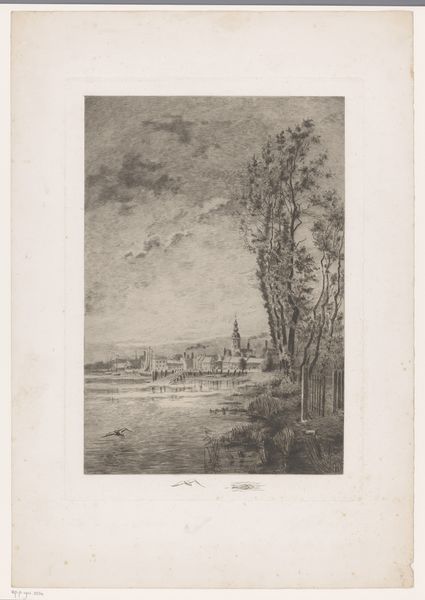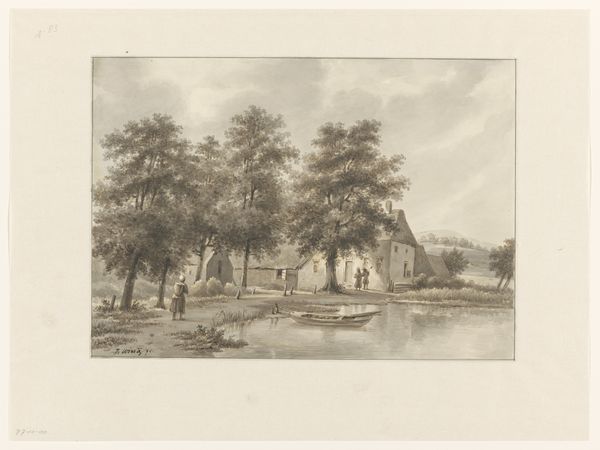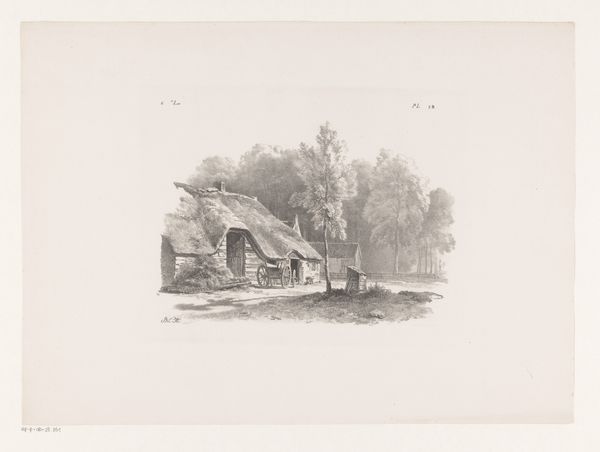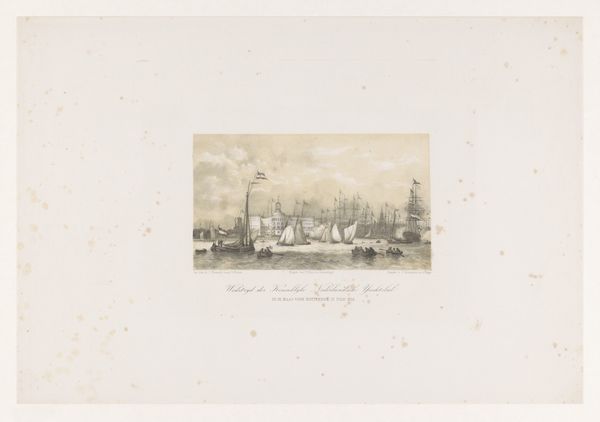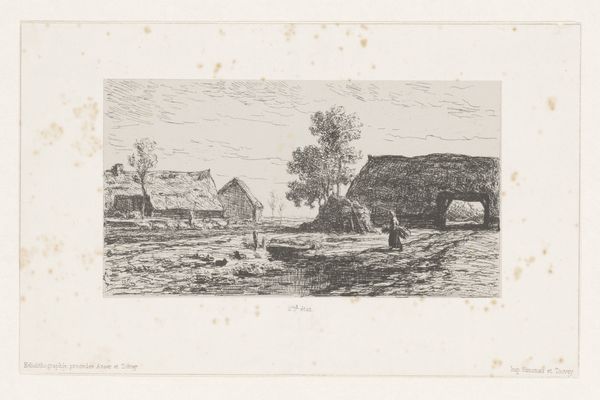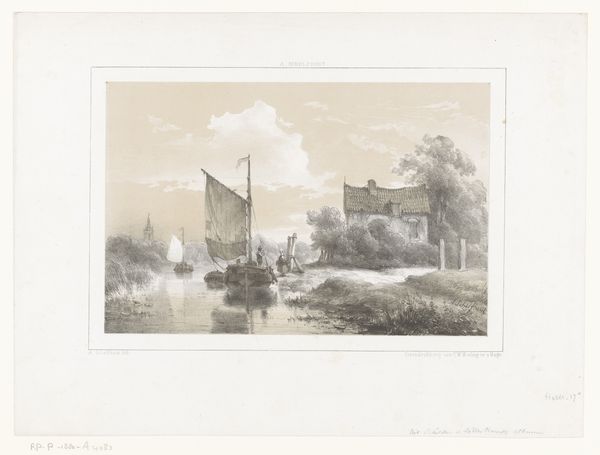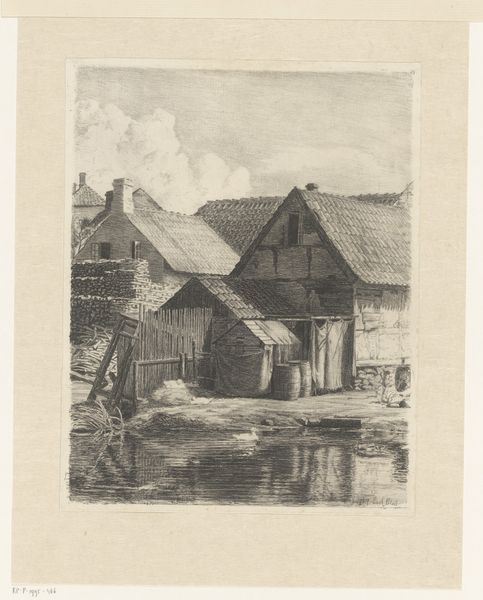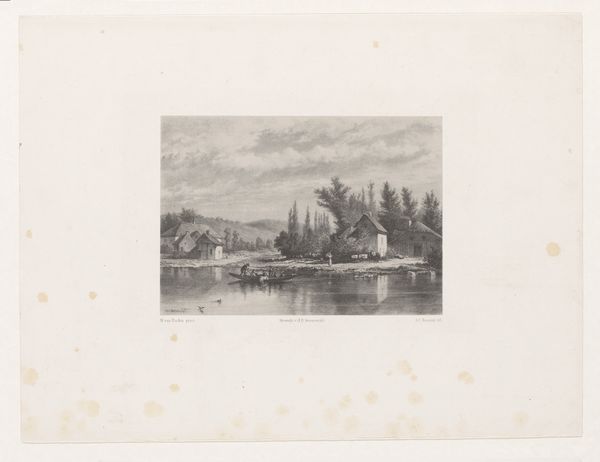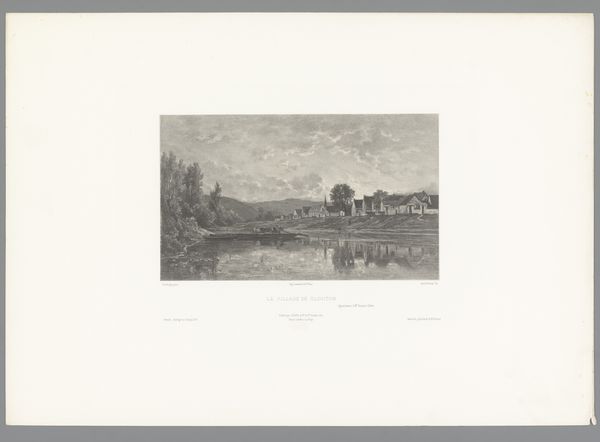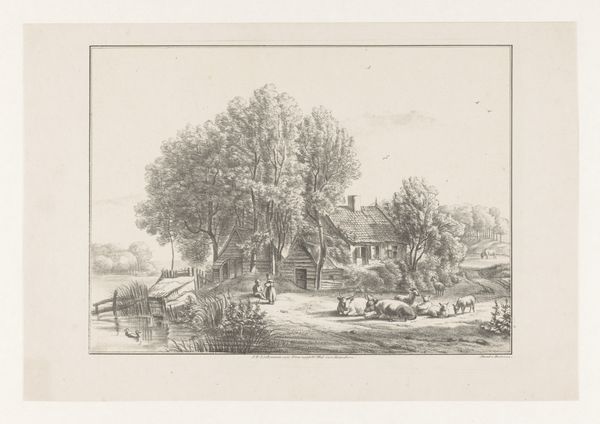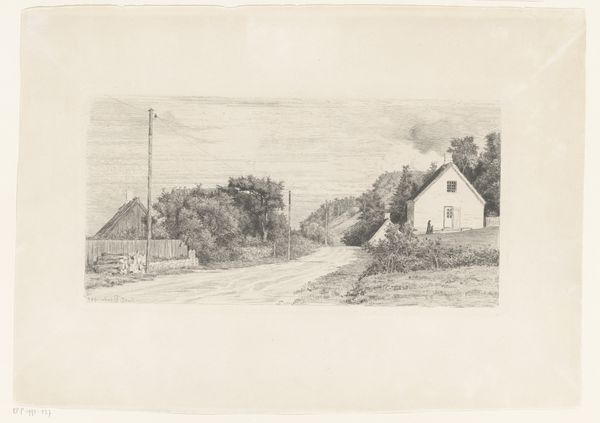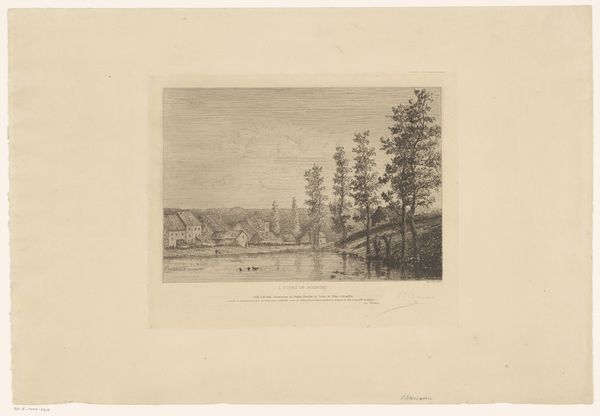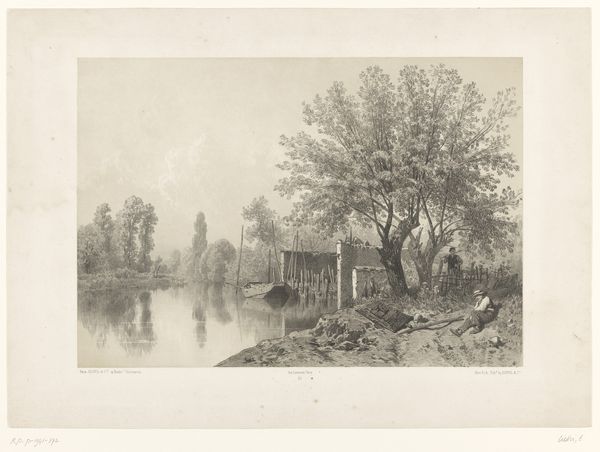
print, etching
# print
#
etching
#
landscape
#
genre-painting
#
realism
Dimensions: height 504 mm, width 333 mm
Copyright: Rijks Museum: Open Domain
Editor: Here we have Auguste Tilly’s etching, “Landschap met boerderij aan water,” placing it somewhere between 1850 and 1898. It's a lovely, tranquil scene of a farmhouse mirrored in the still water. What catches my eye is the detail captured with such simple materials. What stands out to you in this piece? Curator: Well, let’s consider the etching process itself. The image originates not from grand inspiration, but from acid etching away at a metal plate, then being pressed onto paper – quite the mechanical reproduction. This brings forth interesting implications about art as labor and the availability of images to a broader audience. Look at how Tilly utilizes line and tone. It meticulously crafts a picture plane. Notice the realism and subject choice itself. Editor: I see what you mean. The farmhouse is depicted very plainly; it isn't idealized. So, does that mean Tilly's trying to portray the everyday life and work of the rural population? Curator: Precisely! It reflects the social context in which the work was produced. Landscape and genre painting became popular among the middle class; the demand affected the art market. It is as much about social history as about individual creativity. But doesn't the tranquility portrayed here feel at odds with the intensive labor required to produce not just the image, but the livelihood represented in it? Editor: It does raise some interesting contradictions. I'm thinking about the material reality behind this picturesque image now. Thank you! Curator: And I am considering that etching isn't inherently picturesque; it’s made so by the intervention of skill, labor and the values of its time. A valuable thing to remember when thinking about any artwork.
Comments
No comments
Be the first to comment and join the conversation on the ultimate creative platform.
